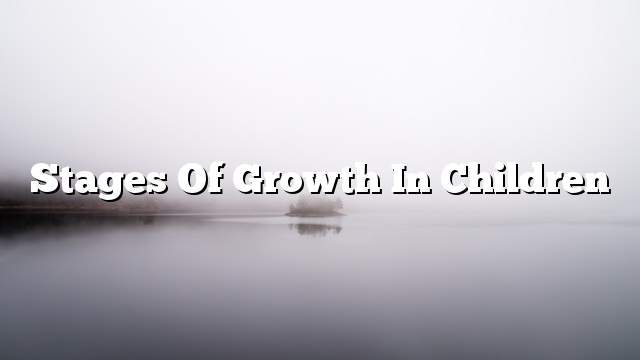The child’s abilities vary according to stages of development, age, sex, male and female, and many other things, different from one child to another, according to the environment in which he lived, the nature of the parents, etc.
We are here to talk about the stages of growth in the child, predominant on a large proportion, as a natural situation of the child, which is as follows:
First stage (first month):
- The baby’s ideal weight is three to four kilograms, and its length is about 50 centimeters.
- Note well that males are larger than females, and have more weight and length.
- The bones of the child are soft, and there is a gap between the bones of the skull from the top of the head. This is called the hole in the piachos, and remains until the child reaches 18-24 months.
- Heartbeat – as well as breathing – is very rapid, equivalent to twice as many adults.
- At this stage, the child needs about 80% of the day to go to sleep and wake up at intervals of feeding at about 10 meals a day.
- The child’s urination and defecation are not voluntary, and his movements are not controlled by him.
- The mother senses his mother through the smell, does not see well in this period, and hearing loss is relatively weak; for the maturity of the auditory center in the nervous system, and the sense of smell and touch and taste is very strong.
Second stage (2nd to 6th month):
- The child’s vision is completed at 40 days.
- In the second month, the child stops crying if anyone carries him.
- The child is alarmed if he hears any sudden sound (at this point the male is more frightened than the female).
- The child’s body begins to grow significantly until at the end of the sixth month to at least 6 kilos.
- The child begins the third month with a smile when others see him and smile at him. The child has the ability to lie on his stomach and lift his head, as he interacts with others by reluctance, and manages his head towards the sound he hears.
- In the fourth month, he cries if he feels lonely, and does not rest unless he sees his mother coming to him, and this month he begins to recognize his mother well, and recognize them markedly.
- In the fifth month, the child begins to visualize, recognize the faces, and can determine the source of the sound.
- In the sixth month, the child begins to respond to the affection of others, and the movement is increasing, and begins to accustom him to sit, and he can distinguish depth, and avoid falling from high places.
The third stage (from the seventh month to the second year of his life):
- During this period, the child begins to grow rapidly and noticeably. The first incisors start to appear at the end of the sixth month, and they begin to feel trapped and hold things for a while.
- After the end of the eighth month, the child begins to rely on himself to sit down, and has a high concentration and attention to the television, and any screen in front of him sounds.
- By the end of the tenth month, the child has the ability to imitate hands, and can stand on a wall or chair.
- At the end of the first year, the child weighs about 9 kg, and is about 75 cm long. He can also distinguish the dimensions of things, such as length, width, height, responding to the forbidden and orders. He needs to feel honest and confident.
- After the end of the eighteenth month, the child becomes able to walk alone, holding his hands and spoon and cup, as he looks at this age manifestations of disobedience, anger, and non-dealing, and show jealousy if someone participated in the love and Idlih, and uses a lot of screaming, biting, His hands are on the ground until his body.
- By the end of his second year, the child calls a picture or a scene he sees, is able to climb the stairs without helping others, loves to eat his own food, and imitates adult roles.
